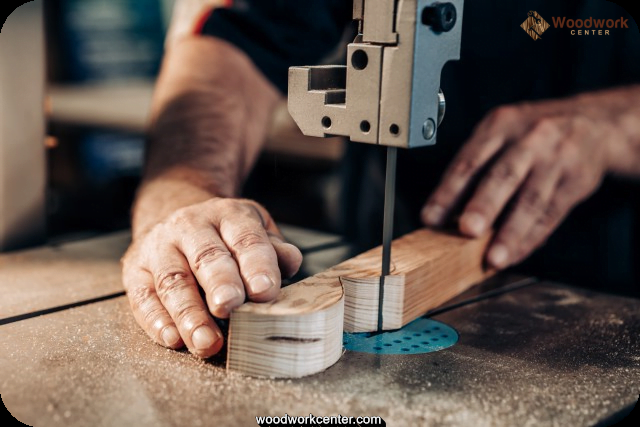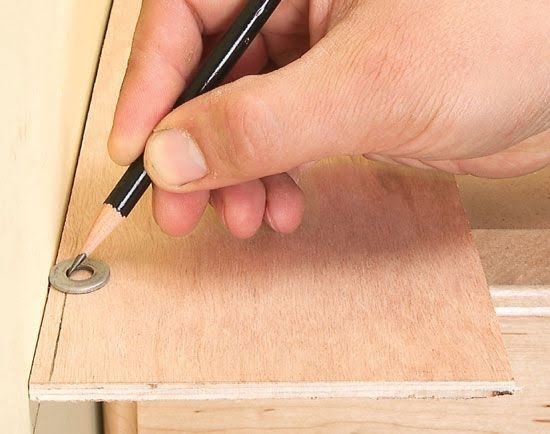Introduction
The landscape of woodworking has changed dramatically over the years. In the past, woodworking involved simple tools and traditional materials. Now, with advances in technology and innovative new products on the market, woodworking can be a highly advanced craft that produces stunning results. Today’s woodworkers have access to an array of high-end tools, materials, and technologies that were previously impossible to use.
One such technology is CNC (Computer Numerical Control) machining which has revolutionized how many pieces are crafted. CNC machining allows for greater control over production so pieces are more accurate and intricate than ever before. As well as achieving precision on shapes and measurements, this technology also offers opportunities for wider experimentation as it can easily create unique designs from digital files without requiring extra effort from the user. It also cuts down on laborious manual processes like sanding or joint cutting so production is faster and more cost effective than ever before.
Another new product contributing to the evolution of woodworking is 3D printing. This technology allows designers to quickly turn their ideas into 3D models effortlessly and give them life by printing them in real materials including metals and plastics”or even timber! This way designers can show off their ideas before committing to full-scale prototyping or production”great news for every wallet in this niche field!
Advances in adhesives have made it possible to stick wooden boards together in ways that would have been inconceivable just a few years ago. These high strength adhesives make creating complex curved pieces with intricate contours easier than ever before, drastically reducing the number of joints needed during assembly and making strong connections between surfaces much more reliable overall.
These innovations in woodworking products have given rise to many exciting possibilities for professionals all over the world, enabling them to develop unique furniture pieces as well as large scale items such as boat hulls or aircraft parts and components safely with minimal waste material produced along the way. The range of timber options now available along with these technologies allow for truly creative solutions that open up new opportunities for industry leaders like never before!
Advantages of Investing in New Woodworking Technologies
Investing in new woodworking technologies provides a number of advantages to woodworkers. From better tools and materials to quicker processes, it is easy to see why the industry is so quickly adapting to new products and methods. The most significant advantage of investing in new woodworking technologies is the increased efficiency and precision. New tools allow for faster cuts, greater accuracy, and superior finish quality as compared to conventional hand-power saws and chisels. Additionally, newer machines can be programmed for more intricate designs and use robotics for repetitive tasks like cutting dowel rods or rounding edges. This saves time and labor costs while providing a superior product that would otherwise require manual labor.
Other advantages include improved safety options with newer tools featuring automatic shutoff switches when blades become dull or blocked; longer lasting blades; reduced airborne dust; less maintenance requirements; quieter operation; improved lighting for better vision; adjustable speeds for optimum results; and energy efficient motor design requiring less electricity consumption. Investing in new technology will also help increase production output allowing businesses to turn out products faster meeting customer needs more quickly. The variety of options made available by these new technologies also allows woodworkers to explore their creativity while producing superior pieces that may not have been achievable with earlier tools or techniques.
Common Mistakes to Avoid When Shopping for New Woodworking Products
When shopping for new woodworking products, it is important to avoid several common mistakes. First, make sure you purchase items that have been certified and meet industry standards. This will ensure that the new tools or materials you are using are safe and designed to last. Second, do your research beforehand by reading product reviews from customers and experts in the field. Third, it is wise to stick with trusted brands that specialize in woodworking when making selections for items that will impact the results of your project. Fourth, don’t forget to be mindful of pricing. Low prices are often indicative of underutilized or inferior quality materials, so pricing should not be the sole deciding factor when researching woodworking products. Finally, consider investing in multi-use products that may cost more initially but ultimately prove to be more cost effective due to their versatility.
Tips for Maximizing the Benefits of New Woodworking Products
1. Research Potential Products: Before purchasing any new woodworking products, be sure to spend time researching how they will directly benefit your specific project or job. Pay special attention to reviews and recommendations from other woodworkers who have used the product in similar applications.
2. Test Out Products Prior to Full-Scale Use: Whenever possible, try out any new woodworking product prior to using it on a larger scale for a major job or project. Once you are confident that the product is right for your application, you can take advantage of bulk purchase discounts when purchasing larger quantities.
3. Learn Proper Usage Techniques and Safety Practices: Although woodworking tools and equipment should never be mishandled, the danger is even greater with newer products that you may not be as familiar with. Take time to read the instructions and safety warnings related to any new products being used on your current project or job, so that you are following proper usage guidelines and taking all necessary safety precautions.
4. Manage Your Expectations: Don’t expect every new woodworking product you purchase to greatly improve your projects or jobs ” some products may turn out to be disappointments that don’t quite perform as expected. By managing your expectations for each new product purchased, you’ll set yourself up for fewer surprises during use and allow yourself more realistic expectations of the value it will provide over time in relation to cost incurred.
Latest Innovations in Woodworking Technology
The world of woodworking is quickly changing, with new and exciting products being developed to make the craft smoother and more enjoyable for the professional and hobbyist alike. One such innovation is the new range of specialized saws that can easily cut straight lines, curves, nooks, or rabbets. These saws feature high-powered motors and laser guidance systems that make precision cuts easier than ever before. Several different types of jigs and fixtures are now available for use with these saws and enable manufacturers to fabricate complex shapes with extraordinary accuracy.
Another recent advancement in woodworking productivity is computer-controlled routers. Automated routers have been around for years, but recent technology has improved their capabilities even further. Now, CNC (Computer Numerical Control) routers can be programmed to produce intricate carvings in hardwoods or softwoods with ease. The computer can cut curved lines as fluidly as straight lines without compromising the accuracy of a single stroke. Additionally, they tend to operate faster and quieter than manual machines, making them a huge improvement over traditional methods.
Finally, 3D printing is also becoming increasingly popular in woodworking circles. This advanced technology allows workers to create physical prototypes from CAD drawings rather than having to spend endless hours building pieces by hand. It makes possible projects that would otherwise have taken months or years to complete take mere hours instead”all thanks to 3D printers’ ability to rapidly reproduce objects, regardless of their complexity or size.
The Impacts of New Woodworking Products on the Environment
New woodworking products can have both positive and negative impacts on the environment. The use of certain woods, finishes, stains, and glues can contribute to pollution and ozone damage if they are not properly stored or used in a safe manner. On the other hand, these products may help reduce deforestation of forests as people find ways to recycle older pieces of wood and build with reclaimed materials.
The production of these new woodworking products also has an impact on the environment. Fossil fuels are often used in manufacturing processes and production facilities produce emissions that can be a source of air pollution. This can cause acid rain, smog, and other environmental hazards. Additionally, many woodworking factories may use hazardous chemicals such as paint strippers or solvents that can pollute streams, lakes, and rivers if not handled properly.
Finally, new woodworking products may be made from sustainable materials like bamboo or recycled paperboard which could help reduce our dependence on trees for new supplies of lumber for furniture making or construction projects. The use of green building techniques in woodworking shops could improve energy efficiency by reducing energy consumption associated with tools and equipment use. By choosing greener options for raw materials like certified lumber or using low VOC (Volatile Organic Compound) finishes, people can ensure that their projects have less impact on the environment overall.
Conclusion
Investing in new woodworking products is important for a variety of reasons. First, it can help to keep up with advances in the industry, including new techniques and materials that are becoming available. New products can also help lend a freshness to existing projects. This can attract new customers and keep existing ones coming back for more work. Additionally, buying high-quality tools and materials will ensure the finished product meets customer expectations and standards. Moreover, investing in new woodworking products ensures that one’s workshop stays up-to-date with safety protocols, providing protection for workers’ health along with cost savings due to increased productivity and reduced material waste. Finally, owning quality woodworking equipment shows potential clients that one takes their business seriously, which might help them feel confident enough to choose one’s services over competitors’.

Hi everyone! I’m a woodworker and blogger, and this is my woodworking blog. In my blog, I share tips and tricks for woodworkers of all skill levels, as well as project ideas that you can try yourself.





